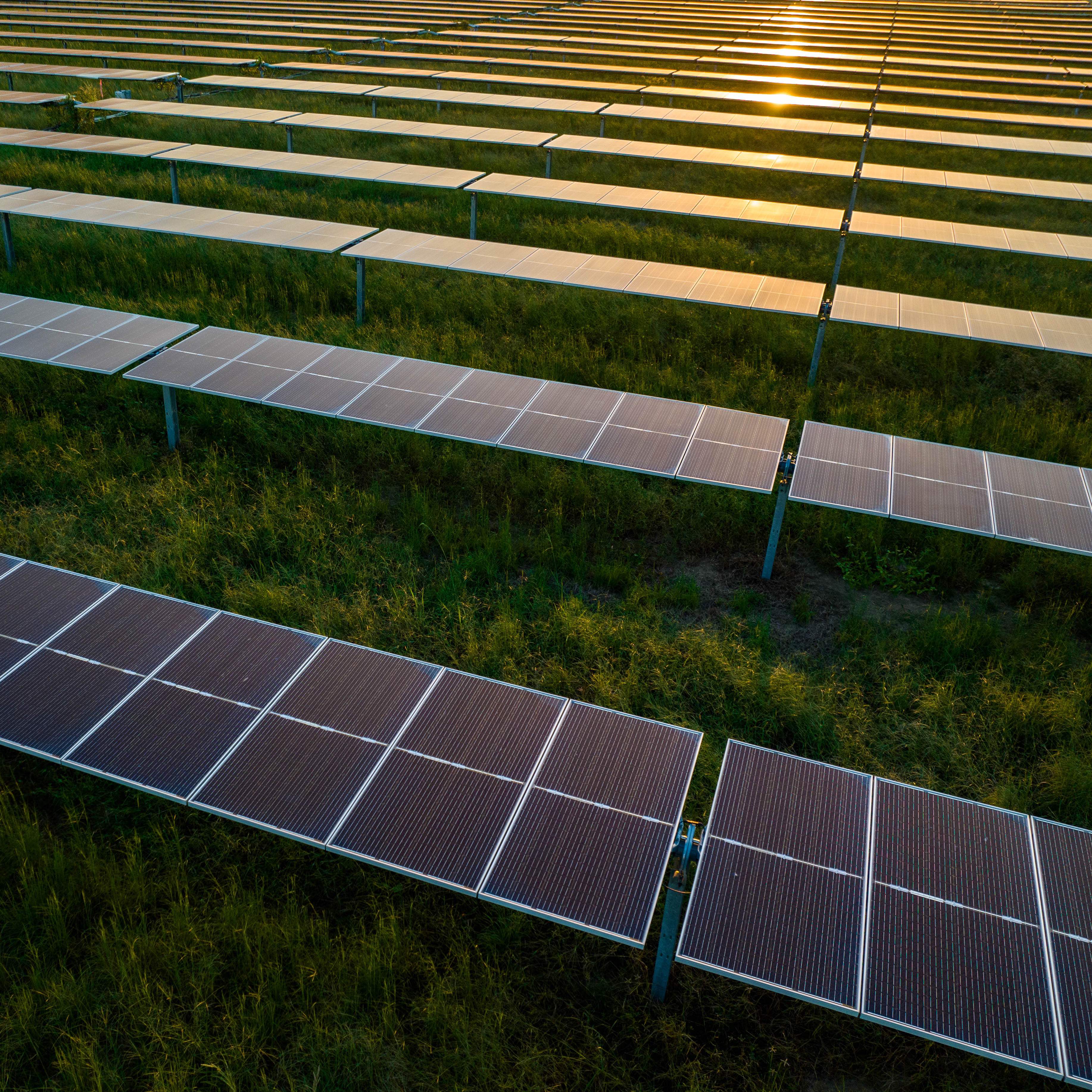Clean Energy
Expertise
Projects
Invenergy Services
Partners
Who We Are
News & Insights

Jul 30, 2024
power lines
Solar operations and maintenance: A proactive approach to diode failure and reverse polarity
by Invenergy
Think of solar panels like a flat screen TV. Power flows through the TV to generate the images. However, unlike the plug in the TV delivering electricity to one spot, standard solar panels are split into three distinct electrical segments. When an issue occurs in the cells of one segment of a solar panel, a bypass diode activates to route electric current around that segment so the rest of the panel can operate normally. This would be like if one-third of a TV screen broke but had a mechanism to allow the remaining two-thirds to function. This means bypass diodes allow solar panels to continue producing valuable electricity even if one of the three primary segments is experiencing an issue. However, if those diodes fail, it can create a voltage mismatch which in turn may lead to reverse polarity, or electric current flowing in the wrong direction. Sustained periods of reverse polarity can cause long-term damage to solar panels.
Solar panels are designed and tested to withstand a certain amount of reverse polarity, and manufacturers even use methods like electroluminescence testing that utilize controlled amounts of reverse polarity to identify potential issues like micro cracks before panels are put into the market. However, instances of reverse polarity may still occur. That’s where a proactive approach to solar operations and maintenance (O&M) can make a big difference.
Using drone inspections and data analytics at solar sites
Proactive preventative maintenance is at the heart of Invenergy Services’ approach to solar O&M. For solar sites, this means implementing preventative maintenance measures like annual drone inspections to proactively identify issues before they spread. Using infrared imaging technology, the drones detect abnormal heat signatures across a site and report that data to Invenergy Services’ personnel. From there, our availability engineers diagnose issues and collaborate with technicians on site to implement solutions.
“Drone flyovers are a way of getting visibility into issues you might not be able to otherwise see,” Alec Brandel, availability engineer III at Invenergy, says. “If we see a cluster of failed diodes that might cause voltage mismatch, we will work with site teams to inspect those areas sooner. Having this data helps us align our priorities better.”
Invenergy Services is actively working with customers to demonstrate the impact drone flyovers and our suite of data analytics can have on the long-term health of solar sites.
Invenergy Services’ culture of continuous learning and safety
At Invenergy Services, availability engineers, asset managers and solar technicians work together to identify and mitigate issues of reverse polarity as early as possible. It begins with solar technician training, where new technicians learn about the causes of reverse polarity and how to identify it.
“I work very closely with technicians in the field, and there have been multiple times since we incorporated reverse polarity into our training process where I’ve gotten calls from technicians saying, ‘Hey, I’ve noticed an issue, let’s figure out what we need to do,’” Brandel says.
Not only does preparing technicians to identify reverse polarity better equip them to resolve those issues in the field, it keeps them safer.
“Safety is all of our responsibility,” Brandel says. “Everyone at Invenergy Services considers safety first when we are troubleshooting issues at a site. The fact that we incorporated reverse polarity into our training and safety programs is indicative of our commitment to keeping technicians safe and the intense collaboration between our teams.”
Although sustained periods of reverse polarity aren’t desirable, Invenergy Services is also in the early stages of exploring how it can be used to benefit solar sites. For instance, the team is studying how to use reverse polarity to melt snow on solar panels and will continue to pursue other strategies that could leverage reverse polarity positively.
“I think our technicians are the best in the industry because of our rigorous feedback loop and our ability to learn and apply those lessons to our work,” Brandel says. “And I think they have a great support system.”
Expertise
Projects
Invenergy Services
News & Insights
© 2023 Invenergy